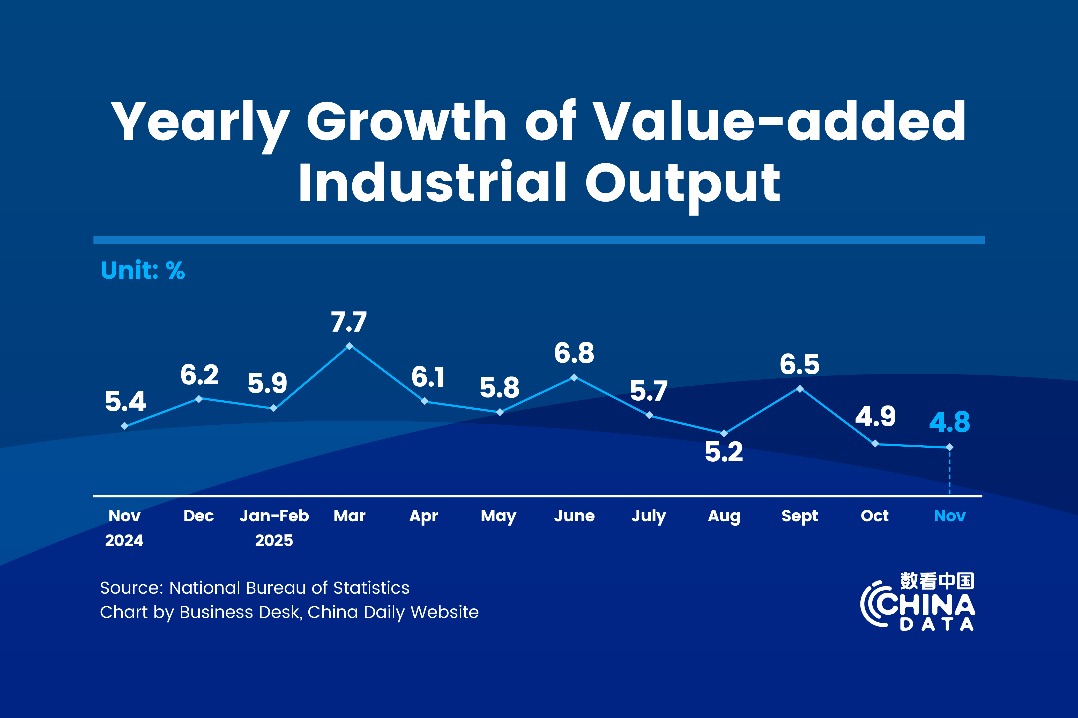Consumption, real estate to steer 2023 economy forward


Since the optimization of its COVID-19 measures, China has seen many of its economic indicators, such as passenger and tourist volumes, recovering. Although not as robust as in previous years, related indexes have outperformed those recorded in December. However, manufacturing sector activity is still relatively sluggish, which we believe is related to the still tepid demand and other aspects, including export weakness. Given China's high level of fixed-asset investment last year and the pressure of weakening external demand, we think the recovery in consumption and rebound in real estate will be the main drivers of China's economic growth this year.
Signs of recovery
In late December, UBS surveyed more than 1,000 consumers in China about their travel and spending plans during the Spring Festival holiday and for the full year. The survey was conducted at a time when most cities were seeing the peak of COVID-19 infections, so most of those surveyed were maintaining a cautious attitude about consumption during the most important holiday of the Chinese calendar.
Referring to travel intentions for the Spring Festival holiday, the survey found that though travel intentionality increased thanks to the optimization of COVID-19 measures, consumers were still sticking to a cautious attitude regarding offline consumption, leading to a more anemic willingness among respondents compared to the previous year. But the willingness to consume throughout this year has increased significantly, which the report said is largely due to consumers' recovering expectations regarding personal incomes this year, as it found that expectations for take-home pay growth in 2023 averaged around 8 percent, up from 6.7 percent recorded in the same period of last year and well above the forecast of 3.0 percent in July 2022.
Now, with no severe rebound witnessed in COVID-19 infections during the Spring Festival holiday nor over the following few weeks, we believe there has been stronger recovery in consumer confidence nationwide compared to the UBS survey results. In addition, with the nation's economic engines vibrant again and the optimization of COVID-19 containment measures, many offline consumption scenarios, such as stores owned by individuals, hawkers, small restaurants and offline service industries such as tourism, will get back on a healthy track. This will drive a lot of related employment, as well as growth of household incomes, thereby supporting a stable recovery in consumption.
In view of the better-than-expected consumption results during the Spring Festival holiday, there is no doubt that consumption will play a major driving role in China's economic growth this year. But how strong the consumption recovery will be, as we see, depends on three key factors: how big excess savings currently are and to what extent they can be released; how long will it take for employment and household incomes to recover and how long the momentum will last; and, will there be any subsidies, and how strong they will be, to further support household incomes and consumption.
Excess savings refer to additional savings on top of that recorded in the previous year. Such savings are not the same as savings deposits. Household savings can be invested in real estate, stocks and bonds or in financial management products, while savings deposits are just another way of utilizing such funds and are considered illiquid.
According to the National Bureau of Statistics and our survey, household savings rates over the past three years were about 3 percent higher than pre-COVID-19 years, forming cumulative combined excess savings of some 5 trillion yuan ($720.32 billion). The rate at which excess savings are released this year depends on the speed with which confidence and the economy recover. If the government has plans for certain subsidies to step up such recovery, excess savings will be released more rapidly and in larger volumes, and savings rates will also drop this year.
However, so far, there is no sign of large-scale distribution of subsidies for low- and middle-income consumers this year. Some local governments with robust fiscal reports may issue consumption vouchers, which, if seen from a macro perspective, won't have much significance on the overall economy.
When it comes to real estate, there have been many adjustments in the industry over the past year or so, which are mainly due to the following factors.
First, the tightening of policies in previous years; second, dried up real estate demand, impacted by slower population growth and urbanization; and third, the unexpected great shock by the COVID-19 pandemic.
In the second half of 2022, new housing area fell by 55 percent compared to that recorded in the same period of 2020, and sales area was down by about 40 percent compared with the first half of 2021.Currently, there is a noticeable imbalance in both supply and demand in the property industry.
It's good to see that regulators have noticed what's happening in the real estate industry, and are ramping up efforts to ensure the industry is on a steady track. For example, developers are getting help with financing in all aspects, cities are canceling or relaxing purchase restrictions, and mortgage interest rates have also dropped quite a bit. Sales area and new housing area are likely to see a month-on-month rise in March and April. The downside pressure by real estate on the overall economy will be significantly diminished.
Furthermore, in early January, there have been rebounds in property sales in some cities. The UBS survey also found that willingness by potential homebuyers has also improved compared to 2021, supported by factors such as lower mortgage rates, higher mortgage availability, lower housing prices and improved affordability. Therefore, there is still demand to be released in the industry.
Possible way out
Based on encouraging factors such as market confidence and government stimulus measures, we expect actual consumption growth this year to reach about 6.7 percent, with a GDP growth of some 5 percent. With total retail sales being nominal, the actual growth is expected to reach around 9 percent.
But there could be something more to be done to hasten the momentum.
The government can expand the fiscal deficit in an appropriate manner and expand bond issuances, which have the lowest leverage ratios. Due to domestic and external impacts weighing on economic sentiment in the past few years, income from land sales has declined and so has the associated tax revenue. Many local governments are facing relatively tight financial scenarios. With concerns over debt risk, the central government should further expand the ratio of deficit and debt to GDP.
To make fiscal support more effective, there are mainly two options. One way is to expand fiscal support for infrastructure construction and directly spend money as investment. Although there was expansion in fiscal support last year, most of the broad fiscal support was used for tax rebates and fee reductions. The multiplier effect of such support amid economic downturns is relatively low because enterprises usually do not use the money from tax rebates and fee reductions to expand production and increase employment, but to safeguard their own financial integrity.
Another way, which has a relatively high multiplier effect, is to give direct subsidies to consumers and smaller enterprises. Both employment and household incomes have been greatly affected by the COVID-19 pandemic over the past few years. During these years, some people may have deposited more money in banks, while some may have suffered unemployment or pay cuts, which all lead to weaker spending activity. In this case, stronger subsidies can promote consumption more efficiently, especially consumption among low- and middle-income earners. The increase in consumption will also increase the cash flow and income of small and micro enterprises.
It should be kept in mind that consumers are also market participants. Giving consumers more money to boost consumption and ultimately expand enterprise revenue is the virtuous circle we should aim for. Therefore, due focus should be given to increasing subsidies to consumers, whether it be through fiscal support or debt issuance.
Additionally, down payment ratios and mortgage interest rates should be further reduced. At present, policies to support financing of real estate developers have been introduced, and the support is increasing. What we should focus on next is how to formulate a virtuous circle to propel the industry's growth. This requires a continuous restoration of stable cash flow for developers or real estate companies in order to stimulate demand. The residential property sector still shows a certain willingness for homebuying, but it cannot be effectively released due to the impact of the COVID-19 pandemic. Some policies to further unleash real estate demand can be adjusted to this end, such as appropriately reducing down payment minimums. There is still room for mortgage interest rate reductions as well.
Last but not least, more efforts should be made to enhance investment confidence. Due to the slowdown in external demand in 2022, corporate incomes have also declined, resulting in weakening investor confidence in manufacturing enterprises this year. Eyeing this, in terms of policies, it is necessary to relax access for private enterprises in more industries and improve regulations covering the private sector. Tax rebate and fee reduction measures adopted for small and medium-sized enterprises in the past few years should be gradually withdrawn, instead of sudden moves, which otherwise will have a more negative impact on enterprises.
The views don't necessarily reflect those of China Daily.
The writer is head of Asia economics at UBS Investment Bank.




































